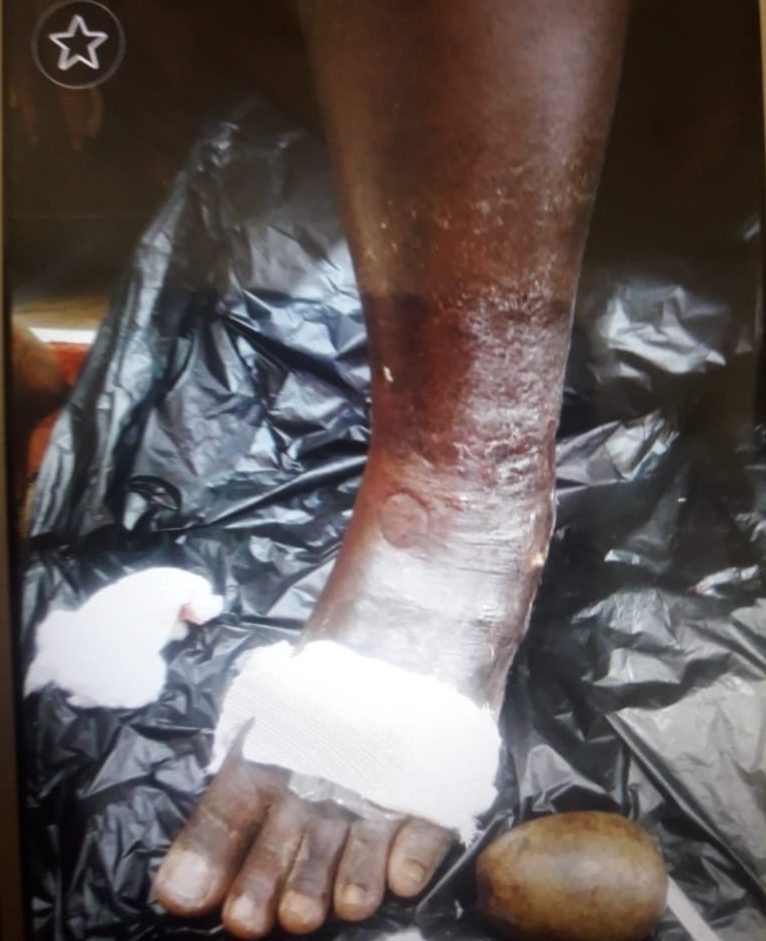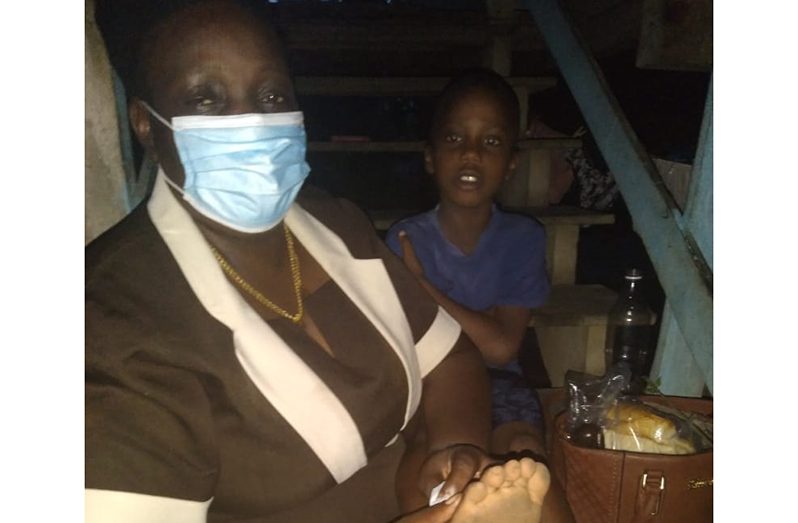–Urlene DeJonge talks about family secret of healing snake bites with calabash and high wine
BECOMING a traditional snake-bite healer was furthermost from the mind of Urlene DeJonge. Whenever her father-in-law had s snake-bite patients to attend to, she would take her fishing hook and go fishing at Ikura, on the Canje River.
But one day, her now deceased father-in-law, Leland DeJonge, chose her from among his many daughters-in-law to be taught the traditional way of healing snake bites.
“Bebe, I got something to teach you; Dem tha know too much. I know de wuk, and dem want teach me. Dem can’t know a thing from me,” she recalled the elderly man telling her over 31 years ago.

It was in 1989 that she had her first patient, and countless have since followed. Patients come from as far as Essequibo and within the Counties of Demerara and Berbice here in Guyana, and neighbouring Suriname.
When a snake-bitte patient reaches DeJonge, she first lights and attaches a young “goobie (small calabash)” filled with ‘High Wine’ and other ingredients on the spot where the person was bitten, so as the venom can be drawn out and prevented from spreading to other parts of the body.
“Immediate neutralisation of the circulating venom is most important,” DeJonge said, adding that certain bush medicines are also given to the patient, depending on the type of snake that had bitten them, which is ideally identified by the tell-tale bite-marks the serpent left behind.
“Currently, a pregnant woman from Soesdyke, on the East Bank Demerara, who was bitten a ‘carpet labaria’, is being treated; I would travel to treat her,” the ‘medicine woman’ said, adding: “After she was bitten, she was hospitalised. However, she was not responding favourably to the treatment; the foot remained swollen and became infected, and the patient was unable to walk. I got my ‘goobie’ and high wine; I shake it, and I draw out the venom from the foot, after which I gave her some snake medicine (a mixture of herbs and other secret ingredients). I also took out the shell (of the snake’s fang, which has a look similar to the tooth of a ‘bangamary fish’) which was left in the foot. Afterwards, the swelling subsided, and the patient is now able to walk.”
As we speak, another patient from Ross Village, on the West Coast Berbice, is currently undergoing treatment, after being bitten by a rattlesnake.
IDENTIFYING SNAKES BY THEIR BITE
“My father-in-law taught me how to identify snakes and their bites,” DeJonge said. “I also learnt the difference between the male and female bites. And according to the measuring, we will know if it is a ‘labaria’ and the type, as there are several species, or if it is a ‘bush master’ or a rattlesnake,” she related to this newspaper.
DeJonge observed that persons who reside in lower flats within the East Canje and Corentyne areas frequently have encounters with the labaria.
“Around washing sinks, some persons are bitten because of the way they dispose of their kitchen waste, which sometimes encourages rats, which, in turn, are prey for the labarias,” she noted.
There are other snakes which are also venomous, such as the “Imarally”, which is found primarily in the Berbice River.
“My father-in-law told me how to treat that snake bite; the patient has to go over ‘Bobby cut (smoke)’ for 40 days and 40 nights, because when that snake bites, it loosens your flesh,” the swnake-bite expert said, adding:

“But my husband, Lindon, he advised me to double the anti-venom dose; and after I did so, it helped the patient. The venom of the ‘Imarally’ travels very fast to the heart, so treatment must be quick; the venom must be kept below the heart, and persons must avoid drinking water for two days or so, as the poison circulates faster around the body. Juice or milk should be used instead.
TREATMENT
“If I am contacted minutes after a snake- bite, then the patient will just have to undergo two treatments; but if it is over a day, then the treatment is doubled.”
Over the years, the traditional healer said, besides adults, she has had to treat children as young as three years old. Some who were living far distances had to be accommodated at the DeJonge residence in New Amsterdam.
“It’s easier to treat a child; all I need is toys as a distraction. But the adults! Oh my! They are generally fearful; they lose consciousness! Some have to bite towels or even bite me or persons assisting,” she recalled with a giggle.
She advised that there are several ways to avoid being bitten by a snake, which includes having a rattle snake ‘pin’ in one’s pocket (which will rattle whenever a snake is around), or having a ‘snake cut’, which is three small incisions made at the various joints and applying a snake powder. Following this application, the subject cannot bathe for three days. And to maintain its potency, nothing that ‘flakes’ can be used; neither can one use a calabash or be beaten with a broom. And while a ‘snake cut’ may last forever, it sometimes has to be renewed.
DeJonge is grateful to her father-in-law for entrusting her with his knowledge to treat patients in the traditional way, which has afforded her a better life, and beautiful home for the seven of her eight children who are still alive. She is currently teaching four of them the family secret.
“If you like talk; you can’t learn,” she said, when asked why she is not passing on the knowledge to all of them.



.jpg)











